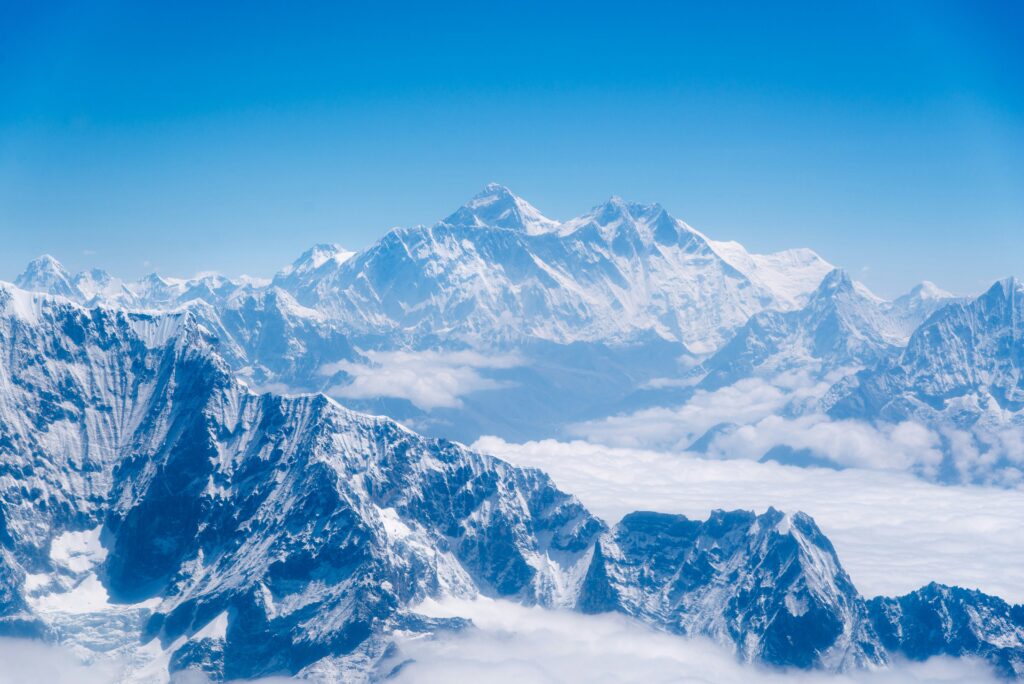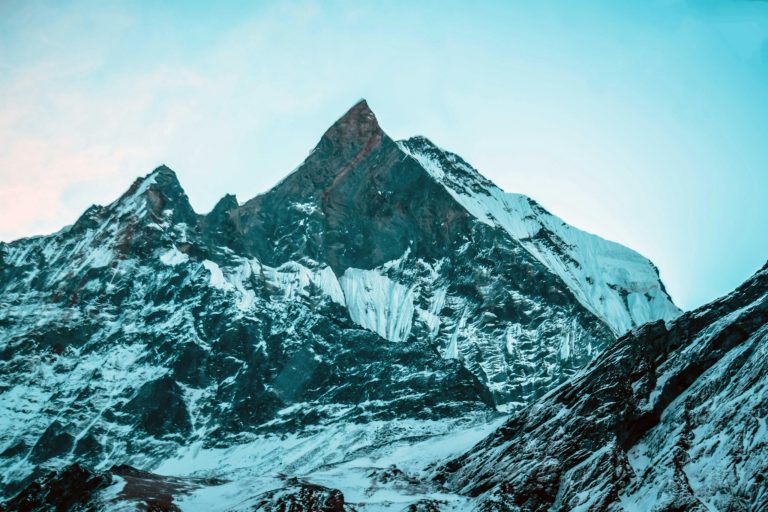The resurgence of Always to netflix reminded the collective of the devastating events This inspired the 2015 movie. This is an intense decline that sinks to the ropes due to the loss of human life. Although many spectators may remember the stelled distribution (With Jake Gyllenhaal’s tastes and Keira Knightley), the film has been appreciated due to the representation of the story. Always It makes it clear that mountain climbing is no joke or an easy feat, although it is an experience of filling. It can lead to tragedies, just like the one in the famous mountain in 1996.
The Mount Everest Disaster of 1996 left only a good handful of survivors
Mount Everest has attracted thousands of adventure applicants over the years, but, unfortunately, not everyone returned home. Always It is based on the history of two expedition groups in 1996 that were proposed to climb the mountain. Together, the groups had a total of 12 people. Despite his best efforts to make his dreams of climbing Everest, a complicated bubble of questions, leaving the eager adventurers who fight for difficult conditions, including hypoxia, altitude disease and altitude pulmonary edema.
Directed by Baltasar Kormákur, Always (2015) represents the 1996 disaster, which claimed the life of eight climbers trapped in a deadly storm. The story follows several climbers, including the Guide Rob Hall (Jason Clarke) and the client Doug Hansen (John Hawkes), who were part of a abused expedition. The disaster shocked people around the world and raised serious questions about the ethics of commercial expeditions to the highest point in the world.
The Mount Everest True Story vs. Everest “
The film is not an accurate account of real events, but it was based instead of the real life of the relentless incident. Since many survivors wrote memoirs, some of the details of the film are taken out of their accounts. Jon Krakauer (Michael Kelly) and Beck Weathers’ (Josh Brolin) “Left for Dead: My Journey Home of Everest” by Kormákur’s work is largely true to the events of disaster, but as in any film adaptation, certain freedoms are taken.
By dramatic effect, some characters condense and the time line is rationalized. The film shows climbers fighting the elements, but does not fully capture the complex consequences of the storm, which involved a physical and emotional trauma for the survivors. Mostly, Always focuses on the disaster itself. Although the film emphasizes the heroism of the climbers involved, it is worth noting that some aspects are exaggerated by film effects. For example, two Andy Harris (Martin Henderson) and Doug Hansen climbers were technically mysterious. His bodies never found, but in the movie, Harris goes from hypothermia and Hansen falls from the side of a rock -Secto.
Rob dies on Mount Everest?
Rob Hall, the founder of Adventure Consultors, is a main character and a real person who spent during the 1996 disaster. In real life, Hall made a disregarding decision to stay behind and help his clients, finally sacrificing his life. In his last moments, he spoke to his wife on the phone, promising to return, but did not survive. His wife was pregnant at the time, adding the disgusting circumstances.
Rob Hall’s daughter, Sarah Arnold-Hall, did not participate in the incident, but has formed a unique relationship with Everest. Despite having never met his father and the place a potential place of pain, he has been surprisingly developing a positive association with him. At just 10 years old, he stepped on the base camp camp. Over the years, she has talked about the legacy and heroism of her late father as a motivator for her.
Beck Weathers died?
In the film, Beck Weathers (Josh Brolin) shows himself as a survivor who challenged the odds. In fact, Weathers was dead after being seriously disoriented. Miraculously, he regained consciousness, erased in the mountains and survived despite losing his fingers and nose on frost. Its survival is one of the most extraordinary aspects of disaster. Surviving the tragedy after a hypothermic comma inspired him to become a motivational speaker.
How many people died in Everest in 1996?

In the 1996 disaster, eight climbers lost their lives. The incident took place during the spring, when a violent snowstorm reached the summit of Everest. The climbers, many of whom were part of the commercial expeditions, were trapped in the storm and faced serious challenges in descending. Some of those who died were climbers guided by Rob Hall’s adventure consultants, including Doug Hansen and Yasuko Namba. The tragedy, which was later explained in the books, is still a reminder of the risks of adding the highest peak in the world. Always It captures the intensity of the 1996 disaster, but real history is one of the great losses and notable human resistance. While the film takes some dramatic freedoms, it honors the memory of those who died. Also noteworthy is the courage shown by those who survived.
How hard is to climb Everest?
The Mount Everest Disaster of 1996 is one of the most fatal and infamous events in the history of mountaineering, drawing attention worldwide over the dangers of altitude ascents. Everest climbing is incredibly difficult and dangerous. The combination of extreme altitude, unpredictable climate and technical difficulty makes that one of the most dangerous ascents in the world. It takes about a week even to prepare and trekking in the base camp can take 12 to 14 days. The climbers then have to withstand weeks of acclimatization, which starts on excursions to adjust to the slim air. After that, climbers need to establish camps that serve as rest areas during the promotion, which usually last two to three weeks. Finally, the climbers embark on the final ascent that can take about 12 hours. Thus, it can take seven to nine weeks to conquer Everest.
At 29,032 feet (or 8,849 meters), the Everest summit is in the “death area”, above 8,000 meters 26,000 feet. This is where the human body begins to break -due to lack of oxygen. Climbers need additional oxygen to survive above 8,000 meters. The climate at Everest is hard and can change quickly, with extreme and high and cold winds that can catch climbers in dangerous conditions. The climb requires physical strength and mental resilience. It is not only the technical climbing skills, but also the ability to withstand weeks of hiking, acclimatization and risk of altitude disease, frost and exhaustion.
How many people Everest Everest each year?
The number of people adding Everest has increased significantly over the years. This is due to improved technology, to a better meteorological prediction and an increasing number of commercial expeditions. In the last decade, the number of climbers that Everest adds has ranged between 400 and 700 a year. The largest number of summits in one season was 2019, with more than 800 climbers reaching the summit. Although Everest’s popularity has made it more accessible, this increase in climbers has also led to concerns about overcrowding, environmental degradation and mountain security problems. At least 310 people have died in Everest And the number grows each year despite security developments.
How much does it cost to climb MT Everest?
In addition to the physical and mental toll, climb the Mt. Everest is not a cheap thing. Most expeditions to Everest take 6-8 weeks, which means climbers need money to fund their journey for so long. With most of the time spent the acclimatization to altitude, this time spent climbing can also be extended. The cost of a guided expedition can range from 30,000 to more than $ 100,000. This total price depends on the level of service and the equipment provided. Given the danger that, of course, climbers may want to crush their adventure to secure a gentle hike.
Despite the strong price, Everest’s climb is still a monumental and incredibly risky challenge. However, the difficulties of the rise, from the harsh conditions to the physical strain, are always present. The true cost of Sumiting Everest goes beyond financial or physical tolls. It is a journey that demands as much ability as an extreme resilience.




